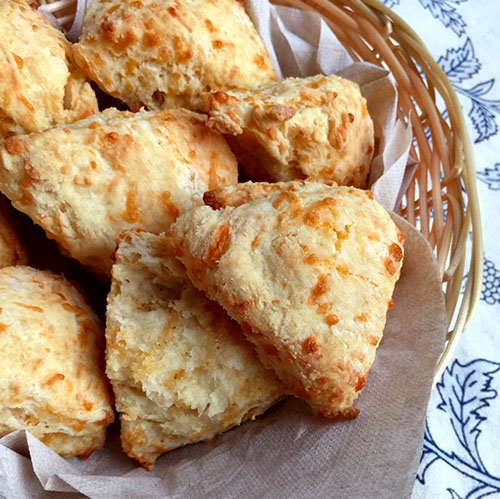
I have a long history with scones — and a good one. One of my first entries for this blog was about the first scone I ever made (see entry of September 2010), and I took the scone name for my blog from a play on a certain “scornful†phrase. Scones have made a semi-regular appearance in my recipe testings and posts in my “bread-of-the-month†feature, and, as I considered continuing making breads for 2019, I decided to devote some space specifically to scones.
I will still make and post about other breads, of course, as bread-making is my Zen, and I am long from done exploring a range of the many kinds that exist. But scones will be a focus each month, and I’m excited to see which 12 (or more) I make (yes, I do plan ahead, but also follow my whims, depending on recipe research, seasonal themes and general cravings).
For this month, I return again to the little book that started it all.
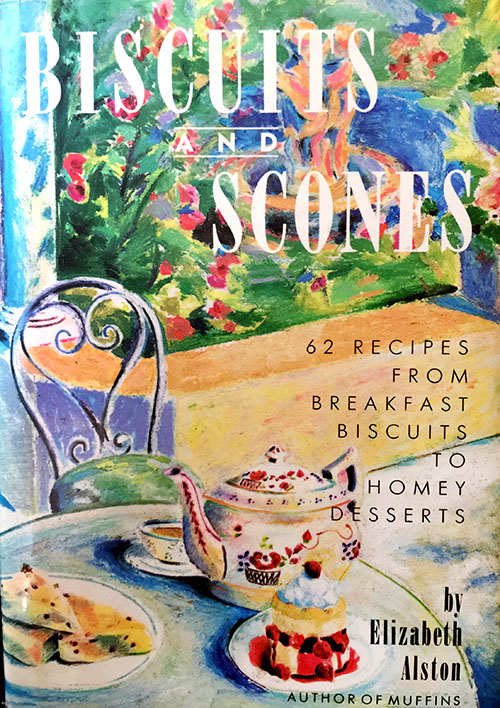
[I]n “Biscuits and Scones; 62 Recipes From Breakfast Biscuits to Homey Desserts,†(Clarkson N. Potter, Inc.; 1988), author Elizabeth Alston, food editor at Woman’s Day magazine, shares a couple of recipes from her aunt, Peggy, including some savory scones laden with cheddar. Of Peggy’s Cheese Scones, she writes: “My aunt likes to serve these (and we love to eat them), for a summer supper, with thinly sliced roast beef or chicken and marinated tomatoes. Make the salad while the scones bake and let both stand for 3 hours so the flavors can develop.â€Â
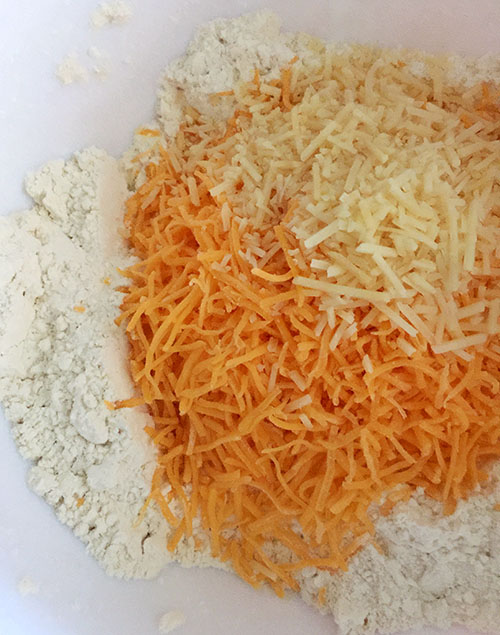
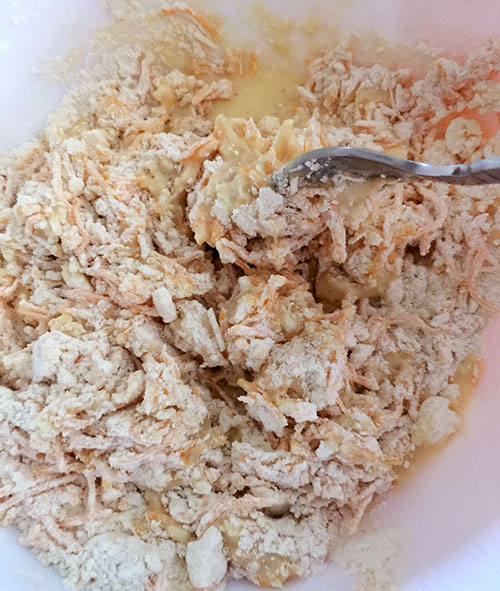
[M]y own history with Peggy’s Cheese Scones goes way back to my first eating and making of scones in the early 1990s. I purchased Alston’s cookbook back then (from a bookstore!), and the page with her aunt’s recipe is marked, via bookmark, as well as the flour, butter and cheese that have gone into the many makings of these little gems over the decades. I made these scones for a garden tea party in North Hollywood once; I made triple batches of these scones to impress my long-ago newspaper colleagues (which they did…one woman who sat next to me confided, with wide eyes and a strained voice, she had eaten too many, as she could not stop); I’ve made these scones to bring to picnics and potlucks and am always asked for the recipe. I’ve put my own spin on them by adding chopped fresh rosemary or garlic powder. They make a great accompaniment, as Alston suggested, for a light supper in warmer months. Or are perfect with soup or a pot of beans in colder seasons.
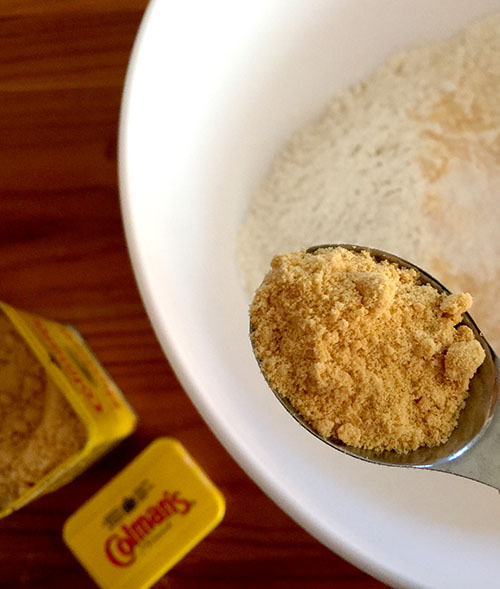
[T]his simple little recipe gets its success from lots of flavor in the two types of cheese — sharp cheddar and Parmesan — as well as the underlying tang of dry mustard. The dough itself is assembled similarly to most scone doughs with butter cut in to dry ingredients (minimal butter, as the cheeses tossed in later also provide fatty texture). Once the dry ingredients, butter and cheese are mixed together, an egg whisked into plain milk is added and all is combined with a fork to make a shaggy dough.
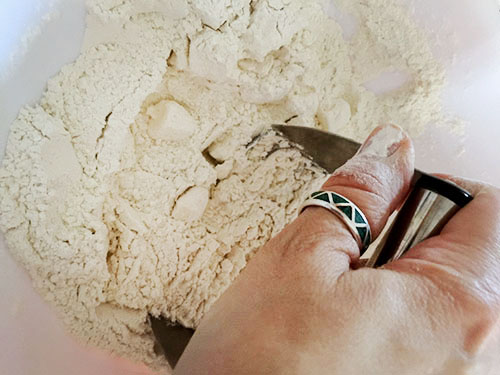
[W]hile most scone or biscuit doughs are not kneaded too much, this recipe calls for giving the dough 10 to 12 kneads, which helps bring everything together and reduce the dough’s crumble.
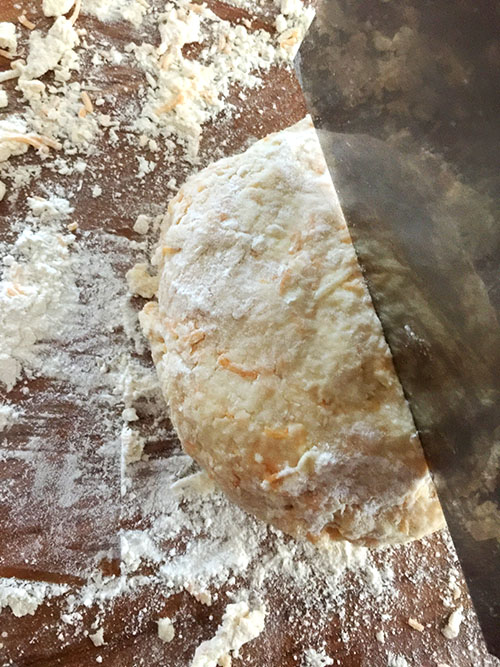
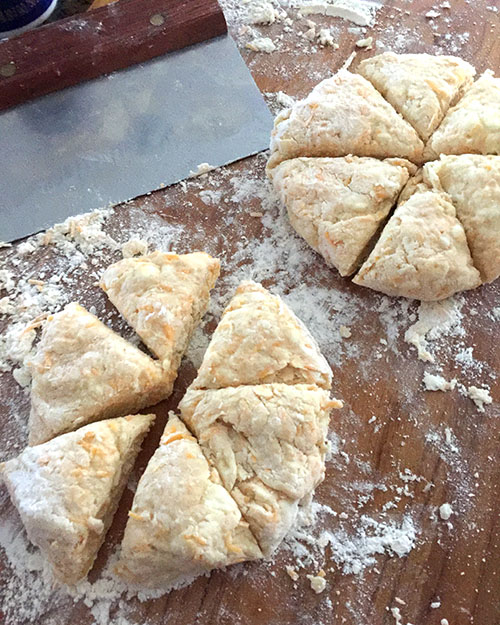
[T]he scones are shaped by dividing the dough in half, shaping each half into a smallish (six-inch) circle) and then each circle is cut into six wedges,
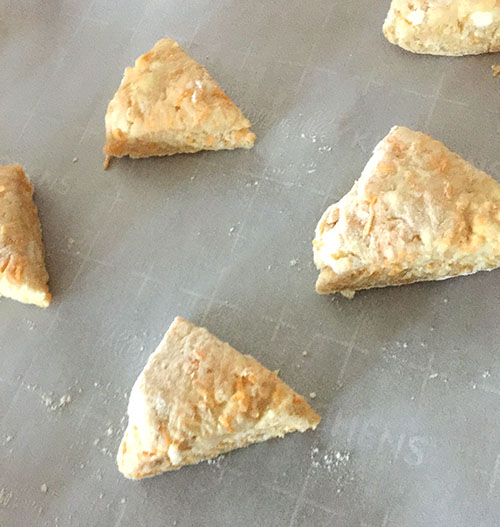
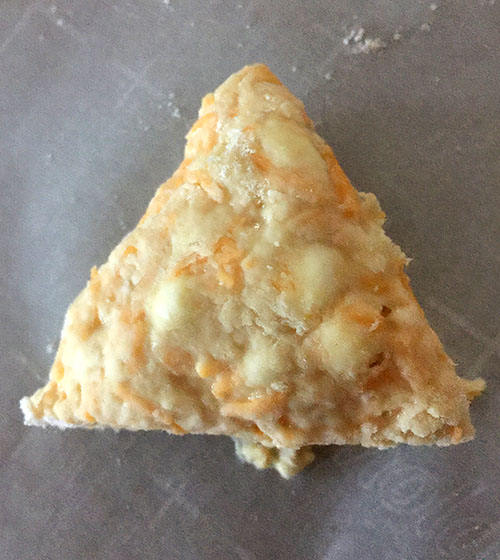
[T]he scones are not huge, but they are plenty and plenty tasty, so size does not matter here (although their diminutive proportions may have led to the overdose I spoke of earlier).
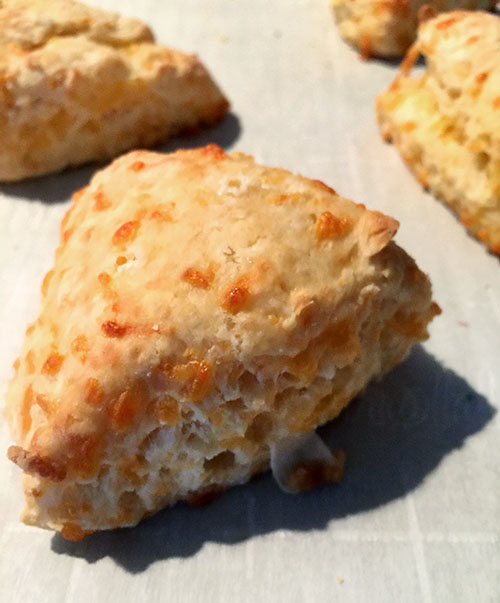
[T]heir golden-orange emergence from the oven is a thing of beauty. I respect Alston’s suggestion of letting them rest for three hours, but eating one hot, while the tangy cheddar in the scone’s moist interior is still melty and the outer edges of the scone are crispy, is something not to be missed. They are great after a wait, too, and can be easily reheated in a toaster or regular oven.
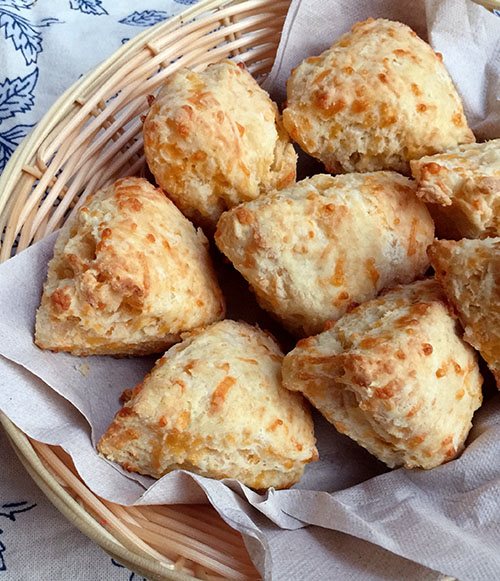
[I] try out all sorts of recipes for breads of all kinds, including scones. I see new ones all the time and I’m briefly led away, but I always return — never sorry — to some of these original recipes that got me baking scones. Peggy’s Cheese Scones will be a part of my regular baking until I can bake no more. I recently took some (to which I added chopped fresh rosemary) to a holiday work potluck and upon leaving, was stopped at the door by a co-worker who said, “Um, I’m going to need that scone recipe.†Normally AWS does not respond well to demands. But, in this case, I gladly obliged.
Peggy’s Cheese Scones
From “Biscuits and Scones†By Elizabeth Alston (1988)
Makes 12 scones
1 1/2 cups all-purpose flour
1 1/2 teaspoons cream of tartar (see note)
1/2 teaspoon baking soda (see note)
1 teaspoon dry mustard
1/2 teaspoon salt
4 tablespoons (1/2 stick) cold unsalted butter or margarine (Peggy uses margarine), cut up
1 cup (4 ounces) shredded sharp Cheddar cheese
2 tablespoons grated Parmesan cheese
1 large egg
1/2 cup milk
Heat oven to 400º F. Put flour, cream of tartar, baking soda, dry mustard and salt into a large bowl; mix well.
Add butter and cut in with a pastry blender or rub in with your fingers, until the mixture looks like fine granules. Add cheeses and toss to mix.
Break egg into milk and beat with a fork to blend well. Pour this over flour mixture and stir with a fork until a dough forms.
Turn out dough onto a lightly floured board and give 10 to 12 kneads. Cut dough in half. Knead each half briefly into a ball, turn smooth side up, and pat or roll into a 6-inch circle. Cut each circle into 6 wedges. Place on an ungreased cookie sheet.
Bake 12 to 15 minutes, or until medium brown. Cool, loosely wrapped in a dish towel, on a wire rack.
Note: Instead of the cream of tartar and baking soda, you can use 1 1/2 teaspoons baking powder.
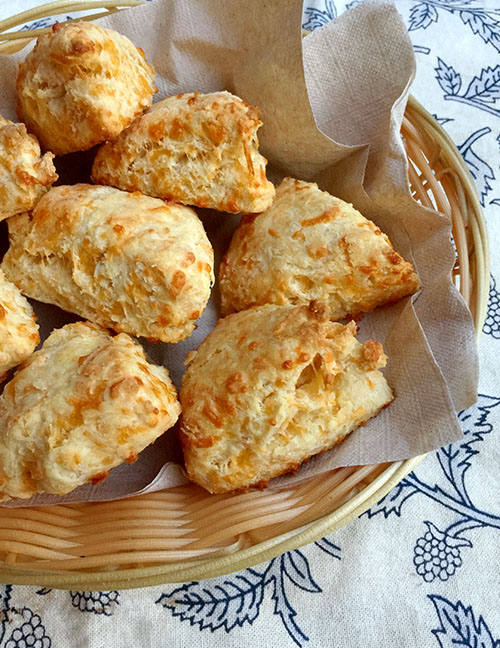
Blogger’s Note: For a rosemary variation, toss in 1 tablespoon finely chopped fresh rosemary with the cheeses. To give the sones garlic flavor, add 1/2 teaspoon garlic powder to the dry ingredients.